ThreatTrack Security Inc. on Wednesday unveiled a new partner program specifically for those SMB partners representing its VIPRE endpoint security product. The VIPRE Partner Program has more aggressive margins, three partner tiers and new dedicated channel employees.
The VIPRE program represents a new channel program for Clearwater, Fla.-based ThreatTrack, which previously lumped its VIPRE-selling partners within an umbrella partner program that also covers higher-end advanced threat solutions for enterprise and federal government customers, according to the company.
At the beginning of this calendar year, ThreatTrack began an effort spearheaded by Chief Revenue Officer Jason Greenwood to expand its base of about 4,000 VIPRE-focused partners and to empower existing partners to increase their revenues within the SMB market.
A key enhancement is a major bump in partner discounts. Previously, VIPRE partners could get a base discount of 15 percent and an additional 12 points for deal registration. Under the program announced Wednesday, partners of any of the program tiers can get a 25 percent discount and can double that discount to 50 percent through qualified deal registration for opportunities of more than 50 seats.
"We've matched the industry's highest-rated endpoint security solution with one of the channel's most aggressive discount strategies and profit-accelerating programs to give our partners a tremendous advantage in the market," Greenwood said in a statement.
The three tiers of the VIPRE program are Authorized, Certified and Expert. Partners registered at the Authorized level gain access to self-service materials. Partners selling at least $20,000 worth of VIPRE solutions annually can join a Certified level, which includes quarterly business reviews and access to new channel employees handling account management and pre-sales engineering support. Partners bringing in $100,000 in VIPRE sales qualify for the Expert tier, which includes customized collateral materials to help with marketing and lead generation.
Posted by Scott Bekker on February 08, 20170 comments
Acronis is refreshing its comprehensive backup suite, Acronis Backup 12, with support for Microsoft Office 365 backups and some new VMware-related functionality.
The Office 365 backup is the main element of the new release and addresses a market opening that backup and recovery vendors have been scrambling over one another to fill. In fact, Acronis itself released a point solution addressing Office 365 backups in its Acronis Backup Cloud product in July as part of a cloud-first approach to product releases.
The new release brings the full power of the Acronis Backup solution for small businesses to Office 365, says Frank Jablonski, vice president of global product marketing and communications at Acronis.
"The key point here is that everything is being done from one solution for you," Jablonski says of the Acronis hybrid cloud architecture for managing and executing backups, synchronization and archiving on more than a dozen platforms, spanning most Microsoft technologies, some Linux, Macs, iOS and Android devices and several cloud providers. Bringing the technology into the Acronis Backup 12 solution means organizations can now manage their Office 365 backups to other clouds or to on-premise targets from the same Web-based console where they run all their other backup management tasks.
Functions that Acronis Backup 12 provides for Office 365 include the ability to back up e-mails, contacts, calendars, tasks and attachments; choose local or cloud backup targets; bring Office 365 files into compliance with organizational archiving policies; preview, browse and search Office 365 content;
recover mailboxes to the original or an alternative location; and recover individual e-mails by delivering them as an e-mail.
Jablonski said heuristic, anti-ransomware protection will be added to the Office 365 backup capabilities later this half.
Also in the refresh of Acronis Backup 12, the company added support for VMware vSphere 6.5, among other VMware-related improvements.
Posted by Scott Bekker on February 08, 20170 comments
Google's recent legal setback requiring the cloud giant to hand over customer e-mails stored on servers outside the United States suggests that the U.S. Department of Justice will fight a recent decision by a higher federal court in a similar case involving Microsoft and its datacenter in Ireland.
In the Microsoft case, the U.S. Court of Appeals for the 2nd Circuit, in New York City, in late January declined to re-hear a case in which the Appeals Court previously ruled that Microsoft did not have to turn over e-mails that the government demanded that were stored in Microsoft's datacenter facilities in Ireland.
Conversely, on Friday in the U.S. District Court for the Eastern District of Pennsylvania, Magistrate Judge Thomas J. Rueter ordered Google to comply with search warrants and turn over to the FBI customer e-mails that were stored abroad.
"Although the new decision is only a single opinion by a single magistrate judge, the decision shows that the Justice Department is asking judges outside the Second Circuit to reject the Second Circuit's ruling -- and that at least one judge has agreed," wrote Orin Kerr, a professor at The George Washington University Law School, in a blog post for The Washington Post after the Google decision on Friday.
Rueter did acknowledge the 2nd Circuit ruling in his decision but ultimately ruled against Google. One key difference between the cases involved the way Microsoft and Google stored the data. The e-mails in question in the Microsoft case were exclusively stored in Ireland and were there for some time. The data that Google had refused to turn over had been partitioned so that portions were stored in the United States, while others landed in datacenters in different countries.
The cases are complicated, and hinge on the Stored Communications Act (SCA), the Fourth Amendment of the Constitution, Mutual Legal Assistance Treaties (MLAT) and many other factors.
The importance of the issues involved to the U.S. government and to U.S.-based tech companies with global business interests virtually guarantees that the fight will continue.
As Kerr nicely summarized the interests at stake in an earlier blog post about a previous twist in the Microsoft case: "For Microsoft, it is thought that lots of European business may hinge on the outcome. In the post-Snowden world, many Europeans are very concerned about the risk of U.S. spying on foreign communications. U.S. government access to foreign e-mail accounts is a sensitive question. ... And it's easy to see why it matters to [the] Justice Department. A U.S. provider can easily put the e-mail of U.S. customers on a server abroad. If doing so would place the e-mail outside the reach of a U.S. warrant, then U.S. providers could readily thwart U.S. search warrants in domestic cases by putting their servers in places where alternative legal process would be spotty or unworkable."
In short, these questions aren't settled. Look for new legislation from Congress, a continuing push by the DoJ to develop dueling federal court rulings or for the U.S. Supreme Court to eventually take up one of the cases.
Posted by Scott Bekker on February 06, 20170 comments
A lengthy and well-run beta testing program that culminated this week in the latest release of Kaseya's remote monitoring and management (RMM) product, VSA 9.4, is evidence of the company's newfound focus, says one longtime partner.
"The mojo has completely changed with different management and a renewed focus on customer feedback, and on the whole feedback loop of 'We have this issue,' and they're truly putting their money where their mouth is," said Chris Banta, director of security and automation for Alpharetta, Ga.-based Safe Systems Inc., which provides IT services for community banks.
Safe Systems, which has been a Kaseya partner for 10 years and belongs to the company's Partner Success Council, has been kicking the tires of the beta for a while. "This is the highest-quality release that we've seen from coding and certainly the most collaborative release, as well," Banta said.
A Kaseya spokesperson confirmed that the four-month beta testing timeframe for version 9.4 was the longest beta testing period the company has held for a VSA release.
When he took over as Kaseya CEO a year and a half ago, Fred Voccola promised to focus on making the products powerful, easy to use and scalable. "It's demonstrating the continued commitment to shut up and listen to our customers," Voccola said in a telephone interview about the latest release. "It's the fourth release that we've had where we've met all of our commitments."
Key enhancements for 9.4 center on look and feel, which were overdue for refurbishment, as well as more cross-platform support for macOS and Linux. Company executives say the process of discovering devices on a network is much faster and more powerful in the current release, helping MSPs make a strong impression in presales engagements. Another focus was on proactive alerting and automations to allow MSPs to cover more endpoints with the same number of technicians. Meanwhile, Kaseya is also continuing to put pricing pressure on competitors, this time on the cloud backup front, executives say.
For Banta, the changes are welcome. "There's this huge, old culture of bashing Kaseya," he said. "We're seeing the culture shift at conferences."
Posted by Scott Bekker on January 26, 20170 comments
As the new year begins, Microsoft is quietly increasing its focus within the partner channel on its ISV community.
Gavriella Schuster, the corporate vice president of the Microsoft Worldwide Partner Group (WPG), telegraphed the shift in a December "State of the Channel" briefing with channel media.
Her comments were focused on partners developing intellectual property (IP), which in most cases means that they are writing code, but can apply to business models or vertical expertise.
"We continue to invest heavily in helping IP services develop within our partner ecosystem, so we're focused on partners of all types actually who are interested in building out IP and creating new and differentiated services offerings. We've seen a tremendous groundswell, both within a traditional ISV channel, as well as within many of our systems integrators and a lot of the consolidation activity that you've probably noticed in the partner ecosystem, as well, where even some traditional resellers are acquiring organizations that have some IP services," Schuster said.
The next part was the kicker that should make infrastructure partners and straight resellers sit up and take notice that things may be changing.
"At the end of the day, I believe that within a year, the majority of our partners will be delivering some sort of value-added differentiation and IP services on top of the technology stack in some way to deliver more value to their customer," Schuster said.
Microsoft's Chief Evangelist, Steve Guggenheimer, made a related point in a separate conversation. Discussing the opportunity areas for Microsoft partners this year, Guggenheimer said the best was for partners to build vertical solutions for their customers built on Azure.
The most compelling piece of evidence about the shifting focus to ISV partners is the retooling of the partner organization that will take place on Feb. 1. Mary Jo Foley reported the changes on her All About Microsoft site in early January. Microsoft hasn't separately announced them, but a spokesperson has confirmed that Foley's report was correct.
The changes reach across Executive Vice President Judson Althoff's Worldwide Commercial Business Group, but the changes within the partner community indicate a clear shift to putting developer partners first. Previously, worldwide partner policy was coordinated in many places but primarily and most visibly out of Schuster's office in the WPG. Schuster reported to the head of Worldwide SMS&P, Vahe Torossian, who had broader business responsibilities in his portfolio than partners. Now Schuster, as well as the head of the Enterprise Partner Team, Victor Morales, and Kim Akers, who runs an ISV team, are part of a new One Commercial Partner business. That unit is run by Ron Huddleston, corporate vice president of the Enterprise Partner Ecosystem for Microsoft.
As Foley points out, Huddleston came to Microsoft last June from Salesforce.com, where he was instrumental in creating the AppExchange marketplace and the rest of Salesforce.com's channel. Microsoft has long sought to match the power of Salesforce.com's AppExchange and Huddleston's arrival is seen as a renewed effort by Microsoft to bring that engine to Azure and its other cloud products.
In summary, Althoff has put the Microsoft WPG inside a business unit run by a new executive with a channel title who also has experience building a vibrant ISV partner community.
Altogether, partners who can help utilize more of Azure's built-out capacity can expect to be showered with the most love from Microsoft in 2017.
Posted by Scott Bekker on January 23, 20170 comments
With an eye on the innovation that's happening among the HPE, Nutanix and Dell-EMCs of the world in converged storage, StorageCraft Technology Corp. on Thursday announced the acquisition of Exablox Corp.
"There's a lot of innovation happening in storage. What we think is there has to be a lot of innovation in the business continuity and backup and recovery side of that. What we're getting into is intelligent business continuity," said Marvin Blough, vice president of worldwide sales at StorageCraft, in a telephone interview.
StorageCraft has become focused on aggressive growth since getting a new chairman and CEO in Matt Medeiros, who arrived a year ago alongside a $187 million private equity investment in the Draper, Utah-based company. Medeiros has said he wants to take the company from the $100 million revenue range to the $500 million revenue range over the next few years.
The acquisition of Sunnyvale, Calif.-based Exablox for an undisclosed sum follows the purchase of Gillware Online Backup, a data backup company specializing in prioritizing backups. Unlike Gillware, the Exablox acquisition moves the SMB-focused StorageCraft upmarket into the midmarket space.
Exablox offers integrated hardware and software for inline deduplication, continuous data protection and disaster recovery. The company's vertical strengths include higher education, insurance and legal.
According to a StorageCraft statement describing Exablox, the company brings together "a new approach that recognizes the disappearing lines between primary and secondary storage as well as between data availability and data protection."
Although the acquisition brings StorageCraft into the hardware business, Blough said StorageCraft won't be coming into competition with its many hardware partners on SMB-focused disaster recovery and business continuity packages.
"We don't want to go compete with guys that are taking our product and combining it with their product [to make an] end-user, on-premise unit. This is going to be an intelligent solution that's aimed at midsize customers or datacenter offerings for partners. The intent is not to build a small inexpensive unit that we go compete with our partners with," Blough said.
StorageCraft has about 3,000 partners transacting each quarter, while Exablox has a few hundred, Blough said. For now, the plan is for both Exablox and StorageCraft to continue to function independently, with a product integration roadmap that the companies describe as "aggressive" to be shared later. Douglas Brockett will continue as Exablox president, reporting to Medeiros.
Posted by Scott Bekker on January 19, 20170 comments
Looking at two recent security studies together, one thing stands out. End users expect Web sites to keep their accounts secure, but they are overwhelmingly unwilling to help defend themselves by logging in with decent passwords.
The new data comes from an analysis by Keeper Security of 10 million passwords that were newly exposed through data breaches in 2016 and from a large-scale international survey conducted by Gemalto.
The Gemalto survey of 9,000 consumers shows that users are appropriately wary about their security. Nearly 60 percent believed social media networks posed a great risk, more than a third thought online or mobile banking left them vulnerable to cybercriminals, and nearly 60 percent believed they'd be the victim of a breach at some point.
Yet when it comes down to responsibility for protecting and securing customer data, respondents said 70 percent of the responsibility lies with the company and 30 percent lies with themselves.
The Keeper Security analysis of passwords revealed in 2016 completely confirms that the attitudes that emerged in that survey are backed up by real end-user behavior. The most popular passwords were jaw-droppingly horrible after years of media attention to passwords, data breaches and security problems. The top five were:
- 123456
- 123456789
- qwerty
- 12345678
- 111111
"Looking at the list of 2016's most common passwords, we couldn't stop shaking our heads. Nearly 17 percent of users are safeguarding their accounts with '123456,'" wrote Darren Guccione, co-founder and CEO of Keeper Security, in a blog post about the results. The top 25 most common passwords accounted for more than 50 percent of the passwords in the breaches.
Like the users in the Gemalto survey, the companies behind both surveys fault the Web sites more than the end users for the problems.
"We can criticize all we want about the chronic failure of users to employ strong passwords. After all, it's in the user's best interests to do so. But the bigger responsibility lies with website owners who fail to enforce the most basic password complexity policies. It isn't hard to do, but the list make it clear that many still don't bother," Guccione wrote.
There's certainly something to blaming the Web site companies. First, they know better. Second, when attackers sweep up millions of passwords in a big breach, they get the great passwords along with the crappy ones. But just because a company isn't doing what is necessary to protect you, is no reason not to defend your own account at all. It's like arguing that because it's a country's responsibility to field an army to defend the borders against foreign invaders, individuals don't need to lock their doors against local burglars.
These new studies underscore that if part of your business involves securing customers' environments, relying on their end users in any way to secure their own accounts with voluntarily strong passwords is an enormous mistake.
Posted by Scott Bekker on January 18, 20170 comments
Microsoft this week padded its selection of massively open online courses (MOOCs) focusing on the Azure public cloud technology stack.
The free Azure courses, which are supposed to take from four to 18 hours to complete, were first unveiled in early December by Gavriella Schuster, the corporate vice president of the Microsoft Worldwide Partner Group. While not aimed exclusively at partners, the courses on OpenEdx, which itself runs on Azure, give partners an inexpensive way to skill up on a technology area that Microsoft is pushing hard and hoping to grow fast.
While announcing the rollout of the first slate of six courses last month, Schuster said another six courses would be arriving in the next few weeks, with more education investments coming throughout 2017.
Eduardo Kassner, CTO of the Microsoft Worldwide Partner Group, unveiled five of those new courses in a blog post on Wednesday. They are Managing Azure Workloads, Automating Azure Workloads, Azure App Service, Databases in Azure, and Azure Security and Compliance.
Kassner said more courses are also in the works, including one on Application Deployment and Management.
The original six courses launched in December were Azure Fundamentals, Azure for AWS Experts, Azure Virtual Machines, Azure Virtual Networks, Azure Identity, and Azure Storage.
Posted by Scott Bekker on January 12, 20170 comments
It's the start of a new year; it must be time for MSP resource reports. This week, two MSP tools vendors released reports designed to help MSPs, both their current partners and, of course, other MSPs that they hope to attract to their platforms.
Kaseya issued its sixth annual MSP pricing survey, a data-rich, 21-page resource for any MSP wrestling with finding the right way to price their services.
This time Kaseya got fourth-quarter 2016 responses from 920 MSPs, more than twice as many respondents as last year. They came in from 50 countries, and some of the queries are broken out across three broad regions -- North America, EMEA and Asia-Pac -- making it possible to do some very rough apples-to-apples comparisons by geography.
Kaseya highlighted overall growth across the market. The company says 26 percent of respondents reported their average monthly recurring revenue (MRR) growth over the last three years is more than 15 percent. That's up a few points from the 23 percent who reported growth at that level last year.
Getting down to brass tacks on pricing, the largest group of respondents (39 percent) picked "up to $125" for their average charge for ongoing server support and maintenance per month per device. The average size of monthly managed services contracts was going up. In 2015, the most common range was the $1,001-$2,500 -- selected by 35 percent of respondents. That's still the most popular in 2016, with 37 percent of respondents picking that range.
But the lower range of up to $1,000 dropped in 2016 from 34 percent to 23 percent, meaning way more respondents had raised their rates. One big gainer was the $2,501-$5,000 range, which went from 19 percent of respondents to 22 percent of respondents.
The top 10 services offered by the highest-growth partners were (in descending order) backup and recovery (either cloud or onsite), server support, network and connectivity support, desktop support, service desk, desktop security, remote monitoring, cloud services (IaaS, PaaS, SaaS), hosting services on MSP-owned equipment, and enhanced network performance monitoring.
Although one piece of advice that regularly comes to MSPs is to not spread yourself too thin, Kaseya reported that the highest-growth MSPs were adding complexity -- adding services, tiers and more to their practices.
The full report is available here.
Also this week, Continuum released "Scaling for Success: The MSP Guide to Operational Efficiency." Partly a pitch for the Continuum platform, the 27-page guide also includes recommendations and organizational charts for re-orienting an MSP practice around an outsourced network operations center. The Continuum guide is here.
Posted by Scott Bekker on January 11, 20170 comments
While Internet of Things integrations and putting personal assistant technologies into cars or desktop robots dominated the CES headlines out of Las Vegas this week, there were plenty of interesting new systems and gadgets for businesses running Windows 10.
The category of two-in-one detachables that start as a PC, where the screen can be taken off to make a tablet, saw a few more entries this week. The most interesting is the Dell Latitude 7285, which is moving the ball forward with a wireless charging capability.
 Dell Latitude 7285
Dell Latitude 7285
It's a bit of a wait, with availability set for the summer and pricing to be revealed during Dell EMC World in May. The 12-inch Latitude 7285 will use WiTricity magnetic resonance wireless charging. Dependencies for full functionality will include a charging mat and a WiGig wireless dock. The appeal will be the ability to remove the device without unplugging anything and return to work at the desk with content appearing on external displays without plugging anything back in.
Another new offering in the category of detachables modeled after the Microsoft Surface is the latest rev of the Lenovo Miix. In April, Lenovo will make available the Miix 720, which will start at $1,000, a price that includes the keyboard but may not include the Lenovo Active Pen 2, depending on geography. The new detachable comes in champagne (as shown below) or iron-gray and, like many of the new machines on display at CES this year, includes a USB Type-C port, in this case Thunderbolt 3.
 Lenovo Miix 720
Lenovo Miix 720
Heavy-duty workstations have their place at this year's show, too. With all the attention on augmented, mixed and virtual reality, Dell is positioning a new laptop as its first VR-ready mobile workstation. The Precision 7720 is designed for VR content creation with power from 7th-Gen Intel Core and Intel Xeon processors and NVIDIA Pascal Quadro graphics. The U.S. starting price is $1,700.
 Dell Precision 7720
Dell Precision 7720
Another forthcoming Dell system is aimed at the Windows 10 Creators Update. By the end of this quarter, Dell will start taking orders for the Dell Canvas, a 27-inch QHD smart workspace supporting touch, digital pen and totems or dials. Pricing in the United States starts at $1,800.
 Dell Canvas
Dell Canvas
HP is also pushing forward in this area, where form factors are changing rapidly to accommodate or encourage new work styles. HP displayed its second-generation Sprout Pro, which features an HD resolution projector, a touch mat that's also a secondary horizontal display, and 2-D/3-D cameras. Top updates are a faster Intel Core i7 processor, 1TB of SSHD storage, up to 16GB of RAM and NVIDIA GeForce GTX 960M graphics. The systems will be available in some countries starting in March, with pricing to be announced later.
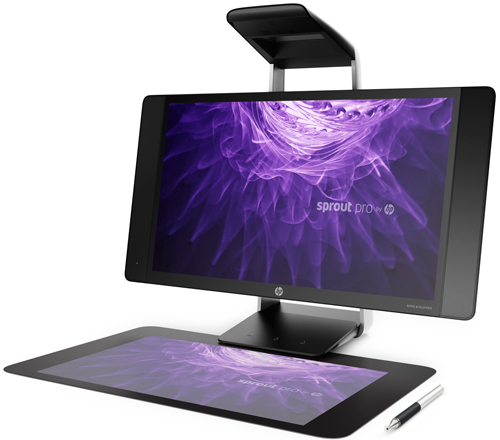 HP Sprout Pro
HP Sprout Pro
For more standard laptops, the 360-degree hinges popularized by the Lenovo Yoga line seem to be winning the design battle. Lenovo is out with another Yoga for professionals, the Lenovo ThinkPad X1 Yoga. The 14-inch metallic silver notebook has an OLED screen, a rechargeable pen and a next generation of Lenovo's "rise and fall" keyboard. The ThinkPad X1 Yoga is available next month starting at $1,500.
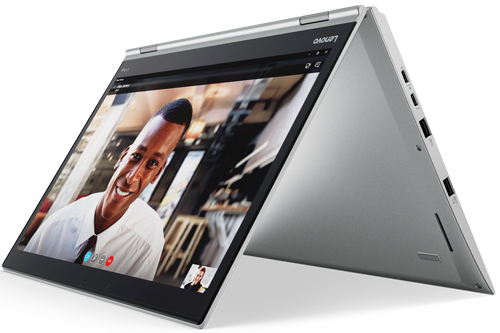 Lenovo ThinkPad X1 Yoga
Lenovo ThinkPad X1 Yoga
Dell is bringing the 360-degree hinge party to its popular XPS 13 line this year. The company is claiming 15 hours of battery life for the new XPS 13, which includes Dell's InfinityEdge, 5.7-million-pixel touch display, a fanless design and all USB Type-C ports to help keep the profile slim. The system is available from Dell.com and Best Buy in the United States for $1,000 and up.
 Dell XPS 13
Dell XPS 13
Toshiba is billing its new Toshiba Portégé X20W two-in-one, with a 360-degree hinge, as a premium Windows 10 Pro system. Distribution will vary by color. A slate-gray version will be available exclusively from MicrosoftStore.com and in Microsoft Stores. An onyx-blue version will be available at the end of the month from Toshiba's Web site and later from other resellers. Among the laptop's impressive specs are a 15.4mm thickness, a weight of less than 2.5 pounds and a claimed battery life of 16 hours.
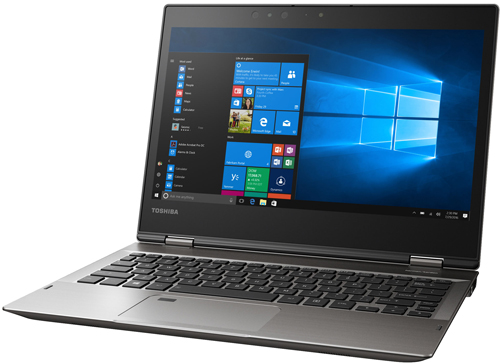 Toshiba Portégé X20W
Toshiba Portégé X20W
HP is following up on its arresting brown and gold HP Spectre x360 line with a higher-powered second-generation system. The 15.6-inch screen sports 4K resolution, while battery improvements allow the machine to run for up to 12 hours, HP claims. Refreshes on the processor from Intel, graphics from NVIDIA and speakers from Bang & Olufsen undergird this update. Preorders are already available at prices starting at $1,500.
 HP Spectre x360
HP Spectre x360
Later this month, HP will release a refresh of its slender HP EliteBook x360. The 14.9mm thick convertible features a 13.3-inch display, an IR camera and a stated battery life of 16 hours and 30 minutes.
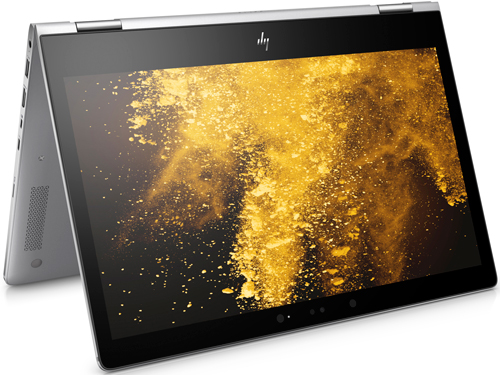 HP EliteBook 360
HP EliteBook 360
In the thin and light category, LG Electronics previewed a few clamshell designs for release later in the year. Dubbed LG Gram, the laptops come in three screen sizes -- 13.3-inch, 14-inch and 15.6-inch. The two smaller-screen models weigh in at about 2.1 pounds, while the bigger screen version is only 2.4 pounds.
 LG Gram
LG Gram
Among the thousands of different devices on display at CES, one stood out for business users on the go. Kingston Digital Inc. unveiled an enormous USB flash drive. The DataTraveler Ultimate Generation Terabyte offers up to 2TB of storage space. It doubles the capacity that Kingston came out with in 2013.
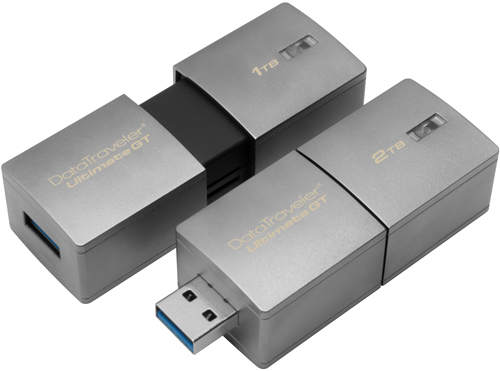 Kingston DataTraveler Ultimate GT USB flash drives
Kingston DataTraveler Ultimate GT USB flash drives
According to a storage chart provided by Kingston, the huge little drive could hold 166 HD movies (.MKV) or 1,792 compressed .MP4 movies. It sports USB 3.1 Gen 1 to exchange all that data with a PC as quickly as possible.
Posted by Scott Bekker on January 06, 20170 comments
One of the first MSP mergers of the year involves two trends that are expected to be big in M&A in 2017 -- vertically oriented intellectual property (IP) and using the cloud to scale.
Kite Technology Group, based in Owings Mill, Md., closed a deal effective this week to acquire AIS Technology LLC, based in Germantown, Wis. Terms of the merger weren't disclosed, but the MSP operations will continue as Kite Technology Group. AIS Owner and President Nick Oliver joins Kite as executive vice president and will be a part owner of the 26-employee combined company, along with current Kite CEO Greg DiDio and Kite Technology Founder Jeff Kite.
Both companies have a long-standing focus of providing MSP services to insurance agencies but bring very different business models to that particular vertical.
"Nick focused primarily on the insurance vertical market and a remote service plan," Kite said in an interview Wednesday. That low-touch approach and his high profile at the national insurance agent conferences both Kite and Oliver attend (and where they met in the early 2000s) have resulted in AIS having customers in 22 states, Kite said.
Kite Technology has taken a more high-touch, white-glove experience approach and has also accepted referrals, resulting in about 45 percent of the former Kite Technology's business being non-insurance agency clients, he said. "Because we were interested in both insurance and non-insurance clients, that sort of led us to focus geographically, so the Mid-Atlantic has been our base," Kite said. "Most of our clients are within a one-hour reach, but we have some Long Island, and northern New Jersey and a lot of central Pennsylvania, down the Delaware corridor."
While AIS has the remote-services approach, Kite says the firm he founded 24 years ago has been building infrastructure that could take AIS' services to the next level.
"What we brought to the deal was [this.] Through our involvement in HTG for eight years now, and Connectwise building best practices -- all of that whole HTG way, if you will -- we have grown our company 22 percent per year average over the last six years. We've done a really good job on operational maturity, and we have the ability to scale our operation. Nick has the reach and the national footprint. We think we can each bring that together and do a much better job of serving clients in a much broader base."
Among those resources poised to help the whole operation grow is an already segmented help desk operation. Kite's corner office sits between the I-Team, which is focused on insurance-industry clients, and, he jokes for want of a different letter rather than a marker of priority, an A-Team focused on non-vertical clients.
As every solution provider with a strong vertical business must, Kite Technology will need to address anew the question of how strongly to prioritize its vertical business versus other types of customers.
"We actually have a sales summit planned for two weeks from now. We are going to do a two-day deep dive where we're going to look very closely at where do we take this now that we're all together," Kite said. "I can tell you that my intention is to maintain a dual-pronged strategy, where within our geographically reachable market, to me that's a comfort zone of one to two hours, I'm comfortable serving clients outside of our insurance vertical niche. I believe that we're going to continue to reach clients and grow that business. And I know for sure that we are going to be intentional about expanding what Nick has done in that remote-only-type service model to an even broader national market."
Meanwhile, as many channel executives predict that IP will become even more important for the tech channel in the year ahead, the Kite-AIS business is an example that IP isn't just for coding ISVs.
"It's much more than an IT understanding of the insurance agency," Kite said when asked about the company's core IP. "We also provide consulting. We have, I think, six staff now who have been full-time employed inside an insurance agency. We know what it takes, understand the complexities."
Keys are knowing how insurance agency employees live in the browser and the big insurance company Web pages and knowing the peculiarities and browser versions or settings that make each site work best, as well as helping clients navigate support for the crucial line-of-business applications like AMS360, Applied TAM and Applied Epic.
As the Kite-AIS deal just a few days into 2017 demonstrates, combining vertical expertise and spinning up a strong cloud/remote support model is one way that growing MSPs will be grabbing for the brass ring of national scale in 2017.
Posted by Scott Bekker on January 04, 20170 comments
E3 is the "hero SKU" for Office 365, Microsoft's top Office marketing executive told financial analysts this month, but the company's long-term vision focuses on the newer and more comprehensive E5 SKU.
In a Barclays Global Technology Conference call, Kirk Koenigsbauer, corporate vice president of Office Marketing, described Microsoft's Office 365 business strategy as being about two things -- expanding "sockets," Microsoft parlance for seats of Office 365 that give the company a beachhead at a customer site, and increasing "ARPU," the abbreviation for average revenue per user that company executives regularly use as shorthand for upselling Office 365 seats with higher-end cloud services.
Koenigsbauer described the socket-expansion part of the business as moving from a phase one, focused on moving existing on-premises Exchange and Office client customers to the cloud, into a phase two aimed at broadening Office 365's customer base.
"With Office 365, of course there is more on-prem to cloud that we feel like we have to go through, but we also feel like...opportunities in emerging markets, opportunities in small business, opportunities serving customers we've not served before, [such as] the deskless-oriented workers. We think there is a big opportunity for us to expand our socket base," Koenigsbauer said according to a Seeking Alpha transcript of the Dec. 7 call.
But the E3 SKU, which adds the Office client rights in a per-user model along with more collaboration value than the baseline E1 package, helped drive the current mix of premium Office 365 SKUs to about 60 percent, Koenigsbauer said.
"Right now, let's say E3 is our hero SKU. It's the one we lead with the most," he said, crediting E3 for much of the ARPU increase for Microsoft over the last two years.
ARPU efforts over the next few years center on "selling the long-term vision around E5" and the year-old SKU's three core components of security, analytics and voice services, Koenigsbauer told the analysts.
"The one that's...getting the most amount of attention from customers right now, not surprisingly, is security," he said.
Posted by Scott Bekker on December 14, 20160 comments